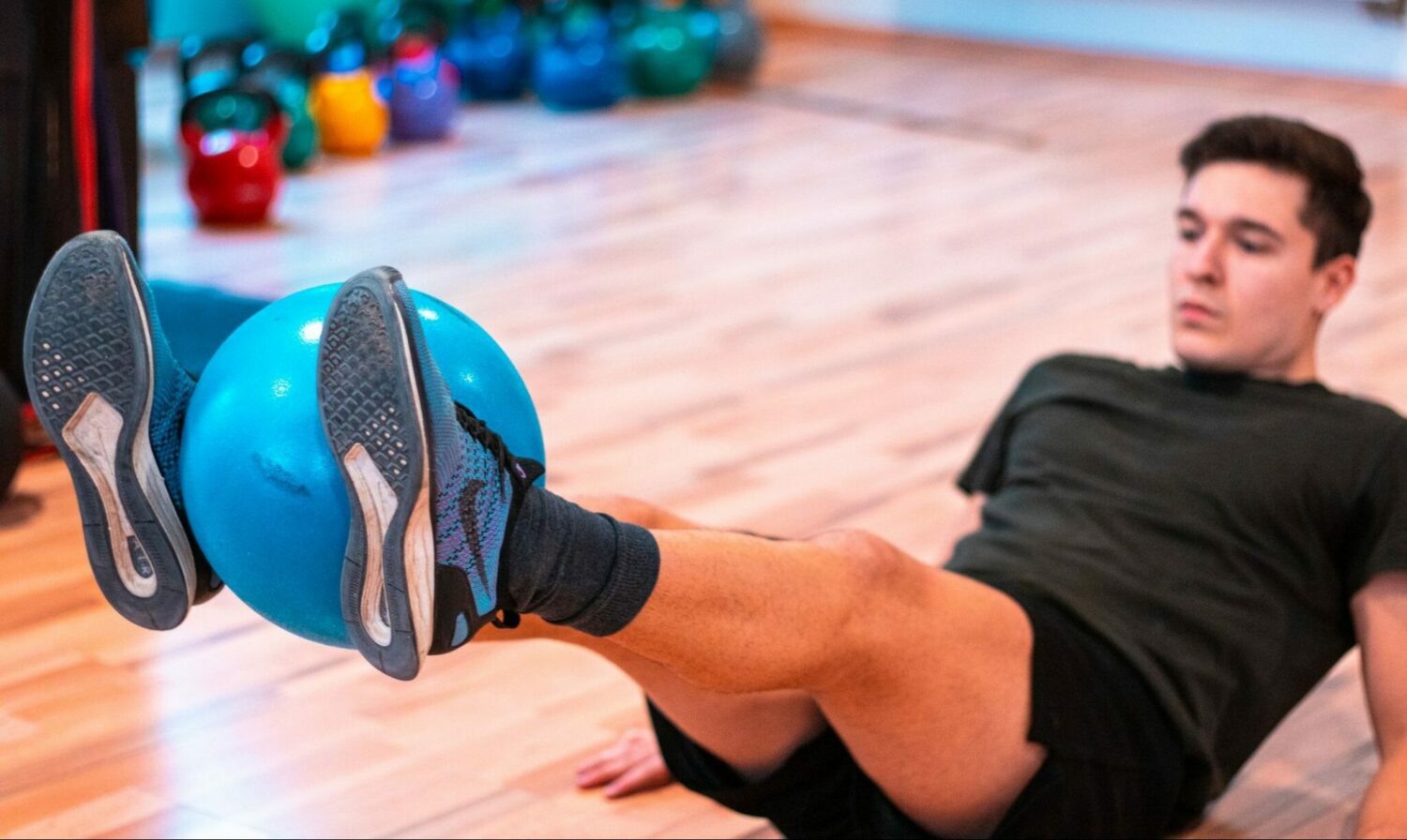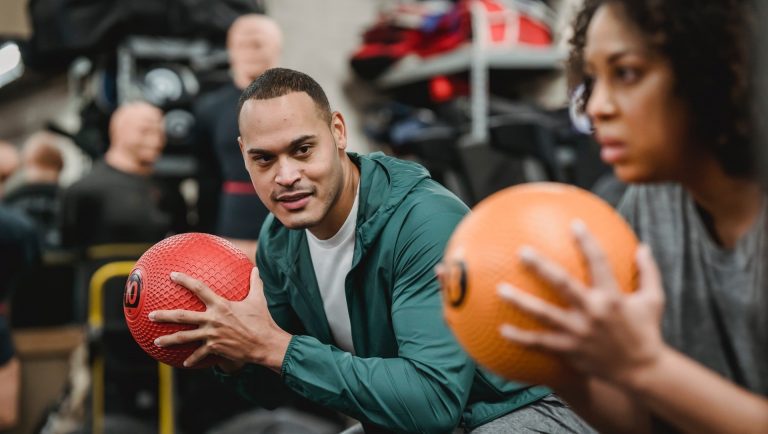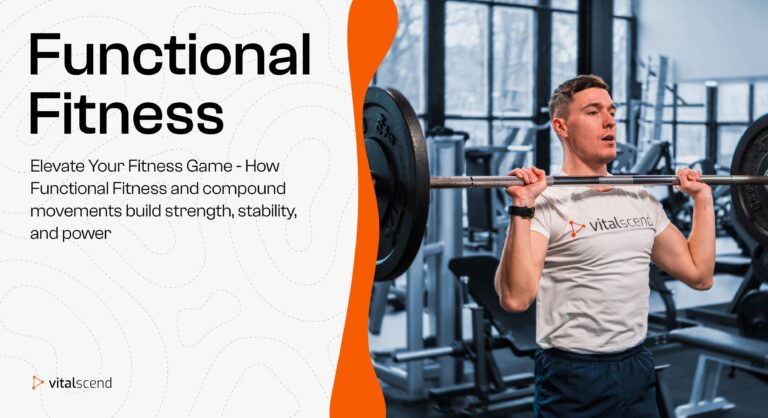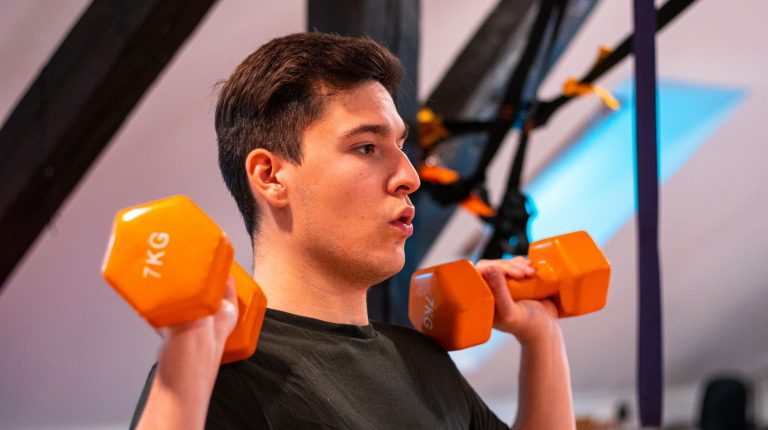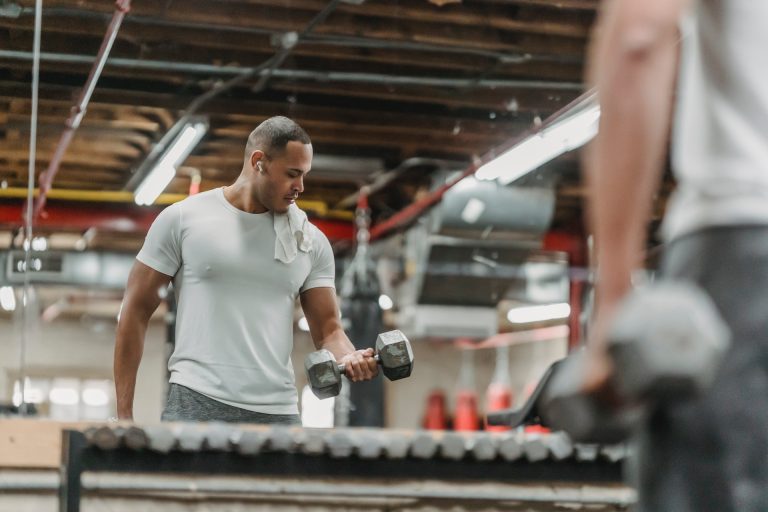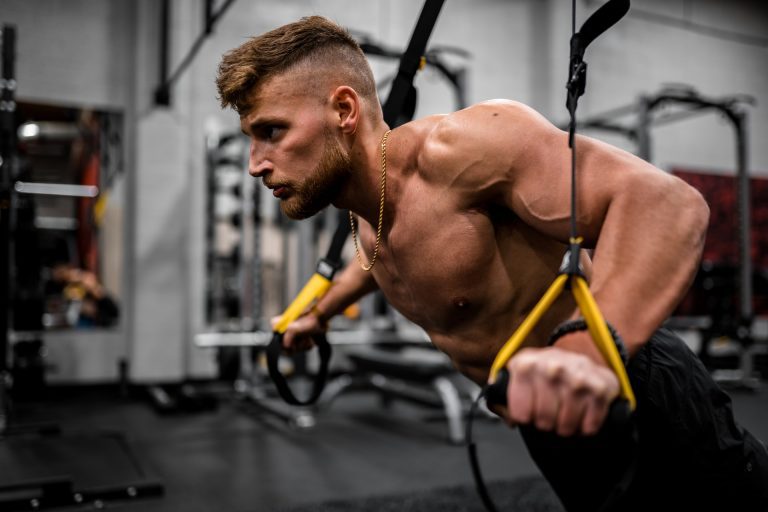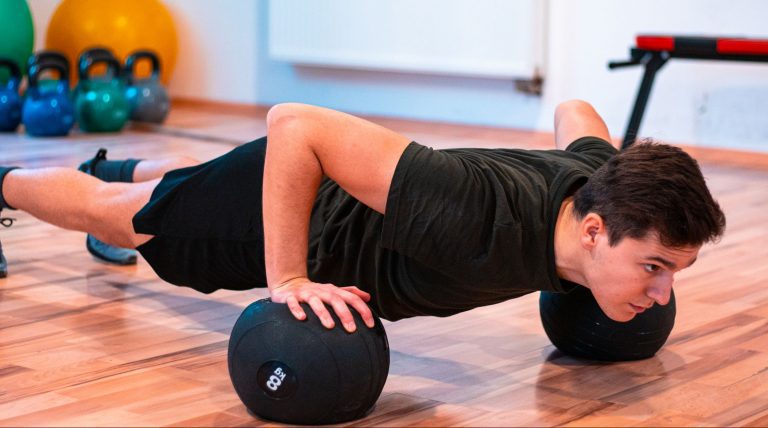Pilates 101: Build Strength, Balance & Endurance
What is Pilates?
Pilates is a bodyweight training method, that mainly focuses on core strength, inner balance, and stability. It is a low-impact fitness system that aims at improving mobility, core strength, flexibility, and posture. Welcome to our Pilates 101 guide.
Pilates training can be done with or without equipment but for starters/beginners, it is best to go to a Pilates studio and train or learn under the guidance and supervision of a professional, licensed Pilates Instructor.
Pilates has been widely used to improve postural alignment but also to enhance athlete performance, and improve core stabilization and body awareness. It is the ultimate mind-body workout, very similar to yoga.
Pilates History & Origin
The creator of Pilates is Joseph Pilates, a German physical trainer. He developed this discipline and called it “Contrology”. Pilates is practiced worldwide but is most popular in the United States, Australia, and Canada.
The point of its method was to control our movement while improving body awareness. The goal is to achieve higher body balance & stability. The whole exercise system is made based on pillars like conscious breathing, controlled movement, and awareness.
The superpower of Pilates lies in the fact that it doesn’t feel like a workout through which you are pumping your muscles, but rather you are the controller of your movement, by which you enhance your physical body and mind.
“Apparatus” is various equipment used in his process with the aim of improving one’s strength or flexibility for optimal progress. This is how the most popular Pilates machine known as “the reformer” was invented.
Pilates Principles
Pilates starts on the mat, with no equipment or machines. There are a couple of principles that determine our postures and movement. Original Pilates has high respect for these strict rules or principles and moves accordingly.
Center
Alignment
Breathing
Concentration
Flow
Precision
Control
When working in a Pilates class you’ll be constantly reminded to control, flex or activate your core muscles. This set of muscle groups around your stomach, such as the lower back, abdominal muscles, and hip & pelvis muscles, are referred to as the core powerhouse, a place from which you should initiate and control your movement.
Just as in yoga, postural alignment and correct poses are a must here. Teachers make sure everyone moves slowly in a controlled manner with the proper postural alignment in order to reduce injury risk and improve or optimize physical progress in terms of strength, flexibility, stabilization, and mobility. Alignment is the proper placement of your body and its parts.
Breathing is crucial when it comes to mindful movement, body awareness, and mind/body training. Yogic breathing has a higher variety and different breathing patterns used for relaxation, warm-up, or during training while Pilates mainly focuses on natural breathing patterns where you use your respiratory muscles, also called intercostal breathing. Full ribcage breathing is emphasized, also known as lateral breathing which increases regular oxygen uptake. While yoga emphasizes belly breathing, Pilates focuses on the Ribcage technique.
The concentration part of Pilates is more focused on the way the exercise is done. We must be focused and do the exercise right, which is far more important than how many exercises we will do, as long as the ones we do are correct.
The smooth transitioning between poses or exercises is what makes the flow. The specific transitions created are meant to give us a sense of momentum, a flow, an art of movement. It is also the primal reason why we sweat and feel the heat so much.
As the name itself suggest, all exercises or postures in Pilates must be done with precision. This means proper postural alignment, correct foot or hand placement, core activation, correct range of motion, and breathing pattern.
Controlling the movement is very important as that’s the main way to work our muscles and keep being safe against gravity. This implies that no fast transitions are done, and no uncontrolled dynamic movements (such as swing) are part of our routine.
Pilates | Characteristics
Besides the main Principles of Pilates, this functional exercise system has some other very important characteristics such as:
Adaptability
An experienced teacher is able to adapt the training based on the fitness level or Pilates experience of its client. This means that whether you are at a beginner, intermediate or advanced level in terms of Pilates knowledge, fitness level, and body control, you can start doing Pilates. Of course, yogis or gymnasts will always have a higher starting point than non-physically active people.
Efficiency
One of the reasons why Pilates became so popular is its efficiency. Now unless you are looking for specific hypertrophy (muscle growth) or a fast fat-loss plan, Pilates will cover most of our needs for movement, body control, and basic strength. It is a great tool to gain stability and strength, while also facilitating fat loss and improving the mind-body connection.
Functionality
Pilates uses bodyweight exercises that emphasize core strength. Functional workout means it incorporates movement we do in our daily lives, enabling us to perform better. Now I’m not saying that we are doing loads of crunches and planks in our daily routines, but Pilates with its core strength control emphasis can significantly improve our dynamic (walking, lifting, running) and static (sitting, standing, lying) posture.
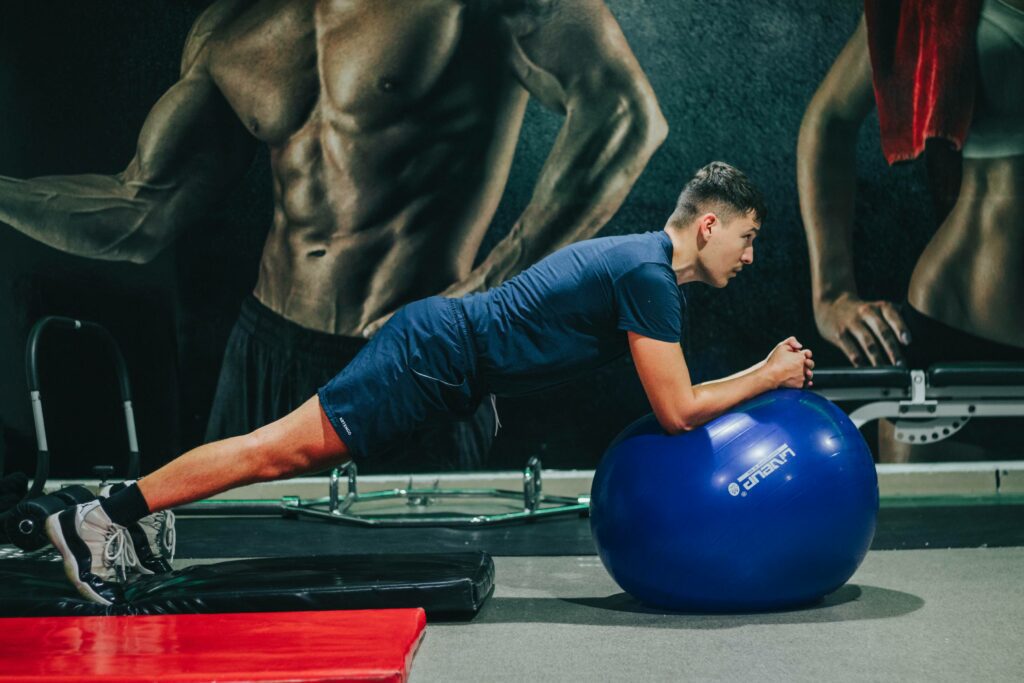
Pilates | Benefits & Effects
Pilates has many known benefits, some of which are supported by science. Here is a quick look at the study based on the benefits and positive effects of Pilates training. Those include posture, flexibility, mobility, strength, balance, and more.
Improved Postural Alignment
It is no surprise that Pilates can improve one’s posture since it affects our flexibility, mobility, and core strength which keep our body aligned.
One study found that Pilates had a significant effect on women with kyphosis, which is a slouched shoulder posture where the thoracic spine has increased kyphotic curvature. The study took 30 weeks, with 2 weekly pilates classes of 60 minutes. (1)
Results showed that the kyphosis angle was decreased while at the same time improving cervical and trunk movement flexibility. Another good benefit these women experienced was reduced body fat percentage.
Lumbo-Pelvic Stability
Pilates needs more testing, bigger trials, and longer duration. However, research still cautiously supports its benefits on core strength, lumbopelvic stability, and overall flexibility. (2)
Lumbo-Pelvic stability is important, especially for adults and the elder population. It is the activation, stability, and support of muscles around the lumbar spine, hips, and pelvis which stabilize our spine increase intraabdominal pressure controls our urine and feces extraction as well as assisting in most dynamic movements, and supporting internal organs.
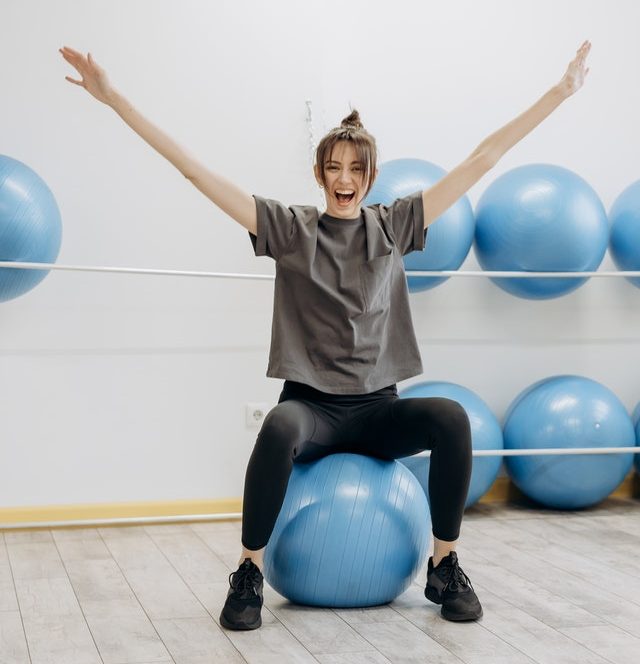
Physical Health
Physical health has a lot to do with our movement patterns, muscle function, and proper range of movement. This is closely related to muscle strength, balance, and flexibility.
A 2010 randomized control trial shows many positive effects of Pilates. They separated 50 subjects into the experimental and control group, each of 25 subjects. After 12 weeks of Pilates, 2 weekly one-hour classes, the experimental group significantly improved abdominal endurance, hamstring flexibility, and upper-body muscle endurance. It is worth noting that significant posture improvements weren’t found. (3)
Pilates for Strength
In patients with multiple sclerosis, Pilates was shown pretty effective for strength and mobility. The 8-week Pilates program resulted in improvements in upper and lower extremity muscle strength, balance, and overall mobility. (4)
Another research done in post-menopausal women showed that 12-week Pilates training significantly improves abdominal, lower, and upper limb strength with no significant changes in body composition or improvement in static balance. (5)
Body Awareness
Training such as Pilates and Yoga are pretty popular for their mind-body connection. This isn’t new, but it’s harder to prove with studies because there is not a straight measurement for body awareness.
From one perspective, improving balance and stability is highly correlated with higher body awareness and dynamic control in space. Usually, we should believe practitioners how their awareness was improved, subjectively, and try it ourselves. (6)
Studies have shown that Pilates (mat classes) have improved mindfulness more than recreational exercises. After 15 weeks, there was an improvement in self-regulatory self-efficacy, perceived stress, and mood, which are again, subjective.
Stress Reduction
Since Pilates and Yoga have so many similarities, the health benefits we get from them should be pretty similar too. It is widely known that meditation can improve brain performance, and make us calmer and more alert. According to MedicalNewsToday, yoga is linked to many benefits such as stress & anxiety reduction, improvement in mood, and reduced hypertension. (7)
Energy & Mood Boost
Pilates is a strength-building workout that emphasizes breathing and flow movement. Increased oxygen uptake can lead to increased energy since energy is created from food, water, and oxygen. Correct breathing patterns and improved posture can lead to increased energy.
In this 2020 review, we can see the potential positive acute effects of Pilates on mood. 87 healthy males were enrolled, exercising 30 minutes of Pilates and the results have shown increased energy, reduced anxiety, and fatigue. (8)
Research Limitations
*Studies have some limitations, important to evaluate the validity of their results. Here’s a highlight of some and NOT ALL studies (and limitation), shown in this article, for context.
- Use of subjective self-reported measure, to evaluate mood, mindfulness, stress, self-efficacy and wellbeing *might reduce results validity
- Lack of randomization.
- Future research with better external factors control is needed, to reduce expectancy values and present results more objectively.
- Relatively small sample size *(n) 2.
- Tests done in specific population * older adults, women with hyperkyphosis, patients with Multiple Sclerosis (MS).
- In need of further clinical studies for specific guidelines for practical application for rehabilitation.
Conclusion
Pilates is a bodyweight training method that puts emphasis on strength, balance, and body awareness. It was created by Joseph Pilates, a German Physical Trainer. The Core Principles of Pilates are Center, Breathing, Concentration, Flow, Precision, and Alignment. Pilates is a very efficient and adaptable style that comes with many physical and mental benefits.
Frequently Asked Questions
Is It Good To Do Pilates Every Day?
Pilates intensity can range from beginner to advanced level. With training, you slowly progress and hopefully, you will be able to do harder Pilates classes for a longer duration. It is okay to do Pilates every day, but you have to work your way to it.
Why Is Pilates Good For You?
Pilates is good for you because it improves core strength, improves postural alignment, increases lumbopelvic stability, and increases body-awareness, making you a more functional human being.
How Is Pilates Different From Yoga?
Pilates and Yoga have quite some similarities and differences. Yoga is more of a mind-body union type of workout, ranging from relaxing to active flow levels, great for hormonal balance and stress reduction, plus is putting emphasis on belly breathing while Pilates is more of an energizing, strengthening, core-focused workout. They both share intense breathing, body-awareness, and flow (art of movement) characteristics. Many of their benefits are similar, such as posture, flexibility, mobility, strength, sleep, and balance improvement.
What are the benefits of pilates?
Increasing core strength, lumbopelvic stability, weight-loss, energy boost, body awareness, increased overall body functionality, and muscle endurance.
Can pilates help me lose weight?
Yes, sure. Pilates as well as other methods can help with weight loss. Most of these benefits come from using higher muscular mass while breathing intensely, trying to stabilize your body, and moving through space. While it won’t be as efficient maybe as running, Pilates can for sure reduce your fat-percentage.

